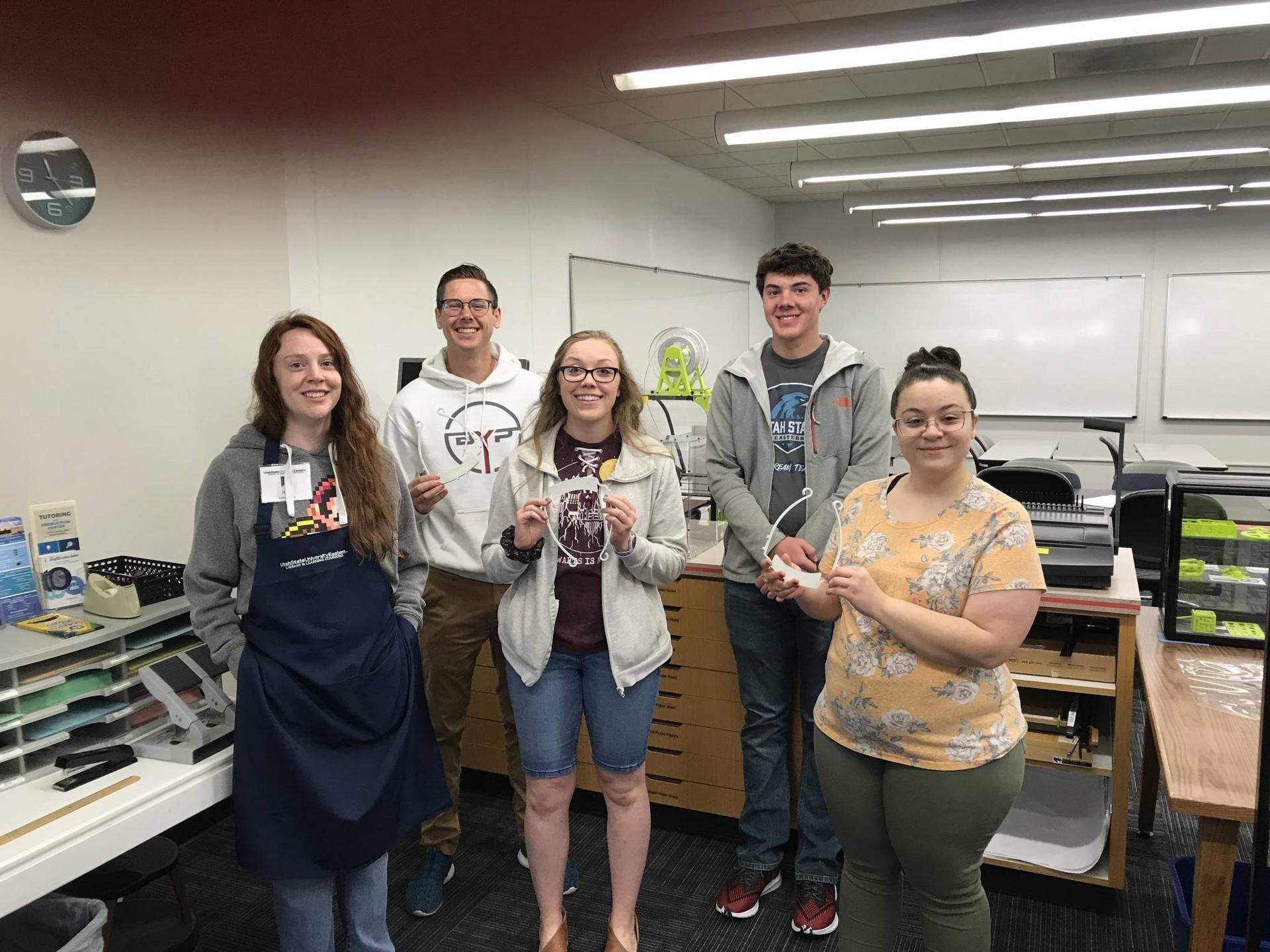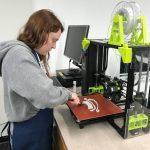By Jeff Hunter
Student employees at Utah State University Eastern’s Library & Learning Commons (LLC) have been hard at work for the last month generating face shields to protect local health care workers in the battle against COVID-19.
Using a 3D printer under the direction of Public Service Manager Aimee Lauritsen, the students created 34 new face shields, which were then donated to Castleview Hospital in Price.
“It is such a positive experience to be able to make a difference, especially since there are times I feel there’s nothing I can do but sit by and wait for the proverbial storm to pass,” said Alexis Gonzalez, a student leader at the LLC. “Actually making and donating masks to the hospital gave us workers a sense of capability, fulfillment and solidarity. We felt more cohesive as a community to be able to help, and we were happier ourselves for being able to actively do something during this pandemic.”
The idea to make shields at USU Eastern was first suggested by Distance Education Coordinator Sherry Arellano after seeing a story about the use of 3D printers in creating medical-grade personal protective equipment (PPE). Then, in early April, an article was published on the Utah State Today (UST) website about USU students from the College of Engineering and the Center for Persons with Disabilities on the main campus in Logan creating PPE for health care workers in northern Utah. The UST story also included a link to design files for making face shields with a 3D printer.
“Sherry Arellano showed us an article on it back in March,” said Amy Peters, director of operations at USU Eastern. “We did not think we had the material or template to be able to do such a project. Then, we saw the project emerge again with our main campus. I had pointed it out to Aimee, and she was able to have Jordan Davis, LLC IT and production specialist, come on campus for a day where he showed five LLC student workers how to run the machine and make the shield templates.”
Lauritsen’s sister, Lezlie Lauritsen-Wright, is currently serving as the infection preventionist at Castleview Hospital where she is also a member of the facility’s COVID-19 command center. Lauritsen asked her sister if the hospital had a need for something like face shields, and her sister, in turn, checked with her co-workers, as well as hospital materials department director, Deborah Brenske.
“Lezlie immediately got back with me and said they would be thrilled to receive whatever were willing to donate,” Lauritsen said. “It is really tough to get supplies right now due to the high demand, and they are grateful for any donations.”
The production of headbands for face shields got underway on April 13. Each headband took about three hours to create on a 3D printer, leaving the Library & Learning Commons with an average of three headbands per day thanks to Lauritzen beginning the process each day before 7:30 a.m.
Depending on the shifts of the student employees, one would pick up where the last one left off, fit the pieces together and then attach transparencies to serve as the shields.
“Knowing that we’d be making face shields to give to the hospital sounded quite interesting,” said Gonzalez, an English major from Duchesne. “I was unsure of how we could do this with COVID causing everyone to be extra careful, but my boss was ready for the challenge. I have absolute confidence in my boss, so I knew she would figure out exactly how this would work. She found out how we would finalize putting together the face shields and disinfect them, as well as coordinated with the hospital so that the donation could be made as soon as possible.”
“To put together these parts, see it all come together, is highly satisfying,” Gonzalez added. “My absolute favorite thing, though, would be how happy the hospital staff was with the donation. Their joy was contagious and allowed for a sense of accomplishment in our endeavor to offer help.”
Gonzalez was one of five LLC student employees, as well as Lauritsen, who were trained by Davis in how to operate the 3D printer in order to create the face shields.
“With most employees working from home, this project helped us to bond in a very humanistic way,” Lauritsen said of the PPE project. “It feels good knowing you are doing something good for someone else; keep your mind from fearing the unknown. I think all of us enjoyed being part of something that gives help to those who are on the frontlines of care during the pandemic.”


